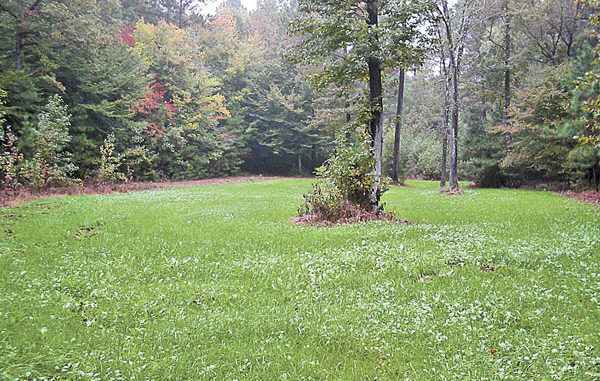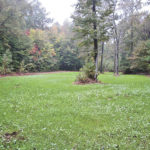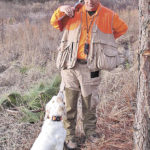
A nutritious, palatable food plot will draw wildlife from clear across the county — or at least one would hope for such a scenario. As long as deer are not overly-disturbed by hunters, the herd will munch away on a regular basis, testing the crop’s ability to flourish under pressure.
After several weeks of heavy browsing and continued regrowth, soil nutrients will quickly become depleted, yielding a “washed-out” food plot. The once-thriving deer hot spot will quickly become stale, and the majority of the deer herd will re-route its travel habits to alternative food sources.
“Food plots must be taken care of and replenished with nutrients routinely. Too many people just plant and wait, expecting the food plot to grow and maintain itself,” said Terry Cooke of Longwood Hammocks Outfitters in Colleton County, S.C.
After 25 years of food-plot trials and 10 years as a full-time farmer, Cooke has learned how to keep a food plot producing through the entire season. He relies on providing a constant food source in his food plots and recommends a fertilizer treatment of one-half the rate of initial planting. The second treatment will continue the fast rate of growth and will provide a season-long food source.
Fertilizer ratios should follow what is prescribed on the label of the planted seed mix. Replenishing nutrients in food plots will keep the deer fed and continue hunter satisfaction.
As the rut progresses, temperatures cool, and natural food sources dry up, deer will spend just as much time within the plots as out of the plots in hiding. They will indulge on lush, nutrient-rich food plots throughout the night-time hours and during the day, depending on the level of human disturbance.
Healthy food-plot management should include multiple plots scattered across a tract of land, and adaptive management strategies should be initiated, including rotating maintenance procedures throughout the entirety of the plot program on the farm. One technique often overlooked is temporary protection to allow plots to catch up from heavy foraging.
“Ironically, deer can be a food plot’s worst enemy,” Cooke said.
While the second fertilization is crucial for food plots, a few weeks off from browsing will benefit the plot, reviving its productivity. Food plots that are most heavily used should be protected after the second fertilizing to allow the plot to revive itself before browsing starts again.
Common exclusion devices Cooke uses to protect food plots during re-growth include: scarecrows, metal pie plates tied on hardwood saplings around the edge of the field and white corn sacks scattered throughout the field filled with human hair, dog dung, and Irish Spring soap. The sacks serve as a visual and smelly deterrent, preventing deer from using the food plot. Cooke places these exclusion devices around the perimeter of several of the plots for a few weeks at a time until the crops become lush and attractive again.
After they are removed, deer will quickly respond and move into the plots to feed again. These homemade deterrents are inexpensive, but highly effective for keeping deer off the plots during regrowth. Cooke will rotate the devices to other fields, shifting the herd’s browsing around and maintaining healthy food plots across his entire acreage.
‘Pointing out’ last-minute bobwhite habitat maneuvers
After a long spring, summer, and an early fall, bird dogs and anxious hunters painfully await the opening of quail season this month.
November is not too late for a few last-minute habitat alterations to improve habitat and hunter satisfaction. Quail management is similar to wildlife management for other species. All species have their own set of habitat requirements that often can be easily manipulated. Quail need food, cover, and water.
Food plots not only provide excellent nutrition for deer, but the crops with small seeds, such as millet, milo, and even sunflowers provide nutritious food for quail. Not only do quail ingest grains routinely, insects are pivotal food sources. The lush greenery in food plots provides cover and a foraging medium for a wide variety of insects favored by quail. Continuing to maintain deer plots in a green and lush state will aid quail within the area. Fertilizing food plots as they begin to stale in November and December will revive plots, prolonging their productivity for all many species of wildlife, including quail.
While food plots are prime foraging areas for quail, unfortunately, rich food sources often corral coveys for foxes, bobcats, and hawk to feast upon. Aerial and terrestrial predators quickly acclimate to heavily-used food plots focusing their efforts on the abundant food sources. Areas heavily used by quail need abundant escape cover placed around the edges of the plot to buffer and protect the birds from predation. Loose brush piles made of tree tops, trimmings, and prunings criss-crossed together are good materials to use.
Living brush piles are easily created and function as perfect escape cover for quail and small mammals. Undesirable trees can be “hinge-felled” — cut halfway through the truck no more more three or four feet off the ground. Higher perches create additional predator ambush locations and are not beneficial for quail.
Partial-felling allows the tree to continue to feed the branches and leaves with nutrients from the soil, only deforming the tree. The tree continues to grow and produce foliage, providing quail with excellent escape cover. The treetop provides loose escape cover and a low perch for songbirds, which will defecate on the limbs and deposit seeds down below, creating lush cover and an additional food source throughout the year.
Prescribed mowing and light discing improves habitat and provides hunters with travel trails for hunting. The mowing and discing should be restricted to single pass strips and should be staggered or weaved to maintain an irregular pattern. The non-uniform strips helps prevent predators from ambushing quail along the disced/mowed areas. Continuous corridors of undisturbed ground cover should also be maintained to provide quail with protection as well.






Be the first to comment